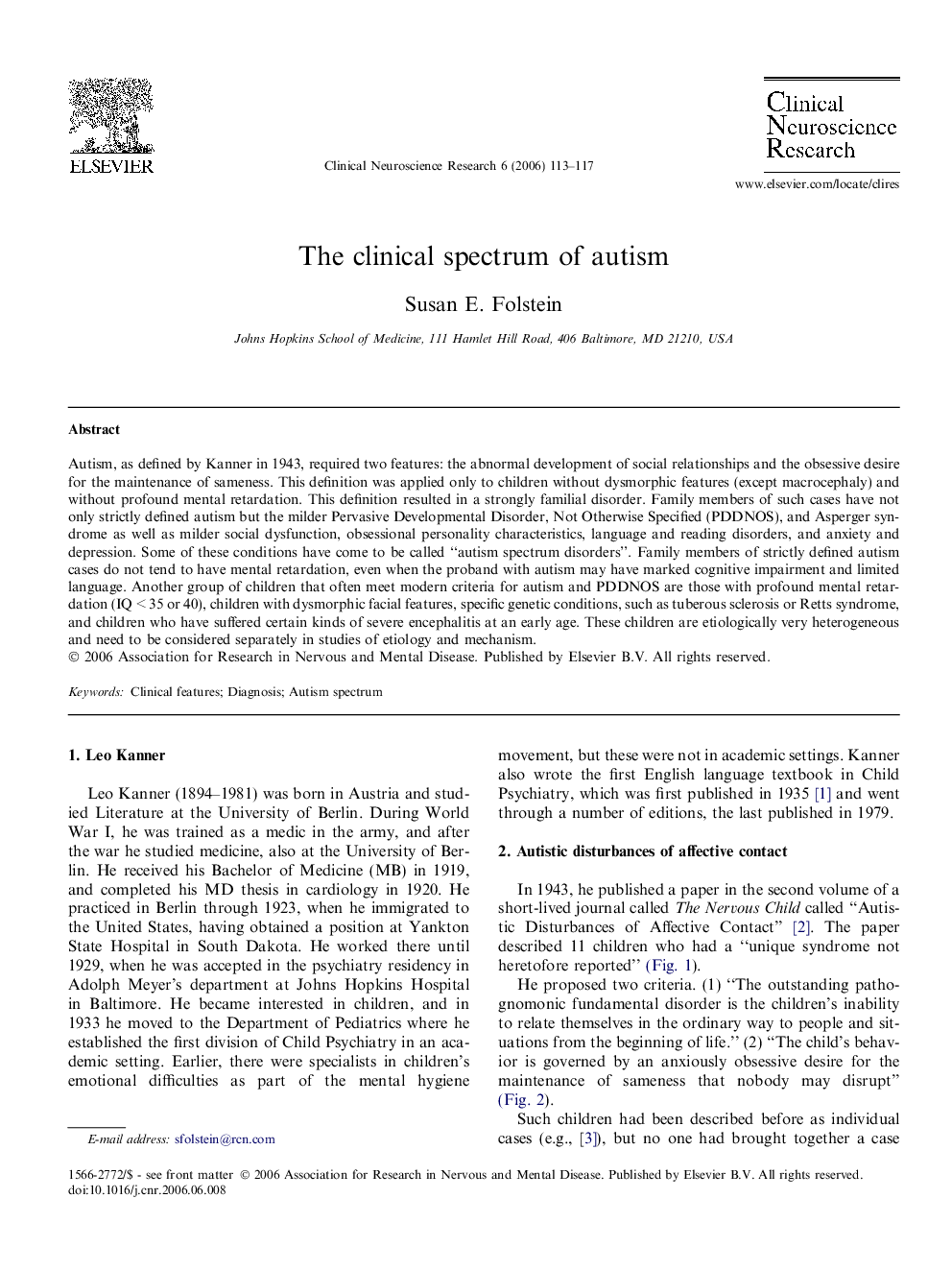| Article ID | Journal | Published Year | Pages | File Type |
|---|---|---|---|---|
| 3049268 | Clinical Neuroscience Research | 2006 | 5 Pages |
Autism, as defined by Kanner in 1943, required two features: the abnormal development of social relationships and the obsessive desire for the maintenance of sameness. This definition was applied only to children without dysmorphic features (except macrocephaly) and without profound mental retardation. This definition resulted in a strongly familial disorder. Family members of such cases have not only strictly defined autism but the milder Pervasive Developmental Disorder, Not Otherwise Specified (PDDNOS), and Asperger syndrome as well as milder social dysfunction, obsessional personality characteristics, language and reading disorders, and anxiety and depression. Some of these conditions have come to be called “autism spectrum disorders”. Family members of strictly defined autism cases do not tend to have mental retardation, even when the proband with autism may have marked cognitive impairment and limited language. Another group of children that often meet modern criteria for autism and PDDNOS are those with profound mental retardation (IQ < 35 or 40), children with dysmorphic facial features, specific genetic conditions, such as tuberous sclerosis or Retts syndrome, and children who have suffered certain kinds of severe encephalitis at an early age. These children are etiologically very heterogeneous and need to be considered separately in studies of etiology and mechanism.
